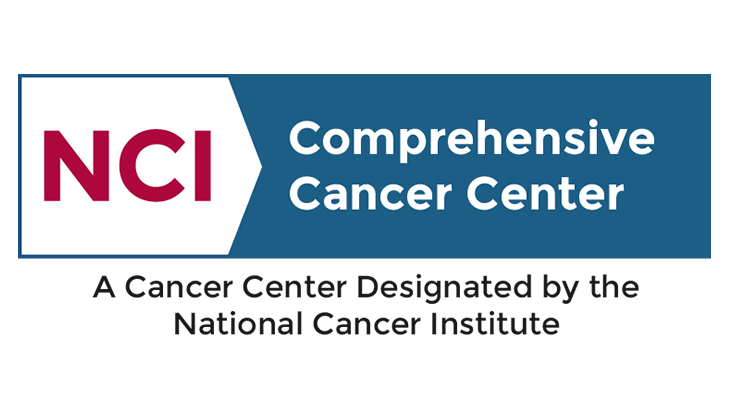
Blood cancers remain a challenging group of diseases, with many types and subtypes. But we’ve made great strides in diagnosis and treatment, with additional, promising therapies on the way.
Learn more about our Bone Marrow and Stem Cell Transplantation Program.
Screening and prevention
MedStar Health offers the most advanced screening technologies for cancers of all types. Accurate screening is key to detecting cancer early, when treatment is most likely to be successful. Learn more.
Some types of cancer are readily preventable, but blood cancers are not among them. The specific causes of many blood cancers remain unknown¬¬—the best hope remains in accurate screening and aggressive treatment.
Blood cancer treatment
Our treatments are research-backed and individualized, with the latest approaches for chemotherapy and radiation and a full range of newer targeted therapies.
We also take part in some of the most promising research and clinical trials in the nation and offer the region’s largest stem cell transplant program.
Chemotherapy is one of the main treatments for blood cancers, and is usually swallowed or injected into a vein. The drug(s) travel throughout the bloodstream to destroy cancerous cells, and are often used in combination with other therapies sometimes preceding stem cell transplants to restore healthy blood cells.
We offer the latest, most effective chemotherapy drugs, with our researchers and others studying and developing ways to improve therapy while limiting side effects:
-
New drugs, new combinations, and new sequences
-
Ways to counter cell resistance to chemotherapy
-
Less intense doses and shorter regimens that still kill cancerous cells
-
Identifying which patients need more intensive treatment and which patients can do with less
Chemotherapy precautions for blood cancer patients
While we always work to minimize chemotherapy side effects, we take additional precautions for those at higher risk:
-
Older patients, who often have a harder time tolerating treatments
-
Pregnant women, who should either deliver before treatment (ideally) or only receive certain drugs in certain trimesters
-
Younger patients, who often respond to and tolerate chemotherapy better than adults but who are still growing
We also use drugs to speed the recovery of white blood cells after chemotherapy, to reduce your risk of infection.
Intrathecal chemotherapy and blood cancer
Regular chemotherapy usually doesn’t reach the brain and spinal cord (the central nervous system, or CNS), which can provide a hiding place for cancerous cells. If needed, we can avoid that by injecting drugs into the cerebrospinal fluid, a procedure called intrathecal chemotherapy.
Blood cancer and stem cell transplants
Sometimes higher doses of chemotherapy drugs are required to treat blood cancers, doses that damage the bone marrow where blood cells are produced. If that’s the case, we provide a restorative transplant of blood-forming stem cells, taken either from the blood (more common) or the bone marrow (less frequent now). There are two possible sources:
-
Allogenic: the stem cells come from a donor (most likely a close relative because of the need to match immune system characteristics)
-
Autologous: the stem cells are taken from your body before the chemotherapy and stored
Stem cell transplants are a normal part of multiple myeloma treatment. But we usually don’t turn to high-dose chemotherapy and a stem cell transplant for leukemia or lymphoma unless other treatments have not worked, or the disease has returned (recurred). In the case of chronic myeloid leukemia (CML), we now try a targeted therapy (like Gleevec) first.
Targeted therapy represents a new front in attacking cancer drugs and other substances aimed at specific molecules that help a disease grow, progress, and spread. The idea is to target a cancer’s unique characteristics, including genes, proteins, supporting blood vessels or host tissue, while limiting damage to healthy cells.
Several targeted therapies are already approved for treating blood cancers, with additional prospects in clinical trials. Targeted therapies are typically used by themselves or in combination with chemotherapy. They are given as an initial treatment or in more challenging scenarios, such as when there’s no response to other therapies or the cancer has returned (recurred).

Learn more about blood chemotherapy. Or learn more about the blood cancers we treat with targeted therapy:
Types of blood cancer targeted therapy
We offer a number of targeted therapies, aimed at various blood cancers and the specific characteristics of the cells they create:
-
Tyrosine kinase inhibitors (TKIs): TKIs target the gene BCR-ABL, which is formed by an abnormal chromosome (the Philadelphia mutation) and makes a protein that helps cancer grow. TKIs are the main treatment for chronic myeloid leukemia (CML) and are also used for some acute lymphoblastic leukemia (ALL) patients who have the mutation
-
Monoclonal antibody: These drugs replicate a natural antibody and target certain substances on cancer cells either alone or with a drug, toxin, or radioactive material to kill the cells, block their growth, or keep them from spreading
-
Proteosome inhibitors: These inhibitors stop cell enzymes from breaking down proteins that keep cell division under control. They are often used to treat multiple myeloma but are also helpful for some types of non-Hodgkin lymphoma
-
Histone deacetylase (HDAC) inhibitors: These drugs change which genes are active by working with a chromosome protein called histone
-
FLT3 inhibitors: These drugs target mutations in the FLT3 gene in patients with acute myeloid leukemia (AML)
-
Cancer vaccines: They are designed to treat, not prevent, blood cancer by boosting the immune system’s response
-
Interferon: This man-made version of a white blood cell protein can interfere with cancer cell division and slow tumor growth. It is used to treat multiple myeloma or lymphoma in some patients
Radiation therapy for blood cancers uses high energy X-rays or other particles from an external machine to kill cancerous cells and shrink tumors. While radiation is not used as frequently as other treatments like chemotherapy and targeted therapy, there are useful applications:
-
Hodgkin lymphoma: While radiation is usually very effective for killing diseased cells in Hodgkin lymphoma, we try to limit its use because of side effects. Thanks to advanced imaging, we can target the disease more precisely and further avoid damage to healthy tissues
-
Non-Hodgkin lymphoma: We might recommend radiation alone for early-stage tumors, or with chemotherapy for more aggressive disease. We might also pair it with high-dose chemotherapy before a stem cell transplant
-
Multiple myeloma: Radiation is a possible treatment for painful bone damage when chemotherapy doesn’t help
Whatever the application, we are careful to minimize radiation side effects, particularly for patients who are younger, pregnant, or older.
Learn more about the blood cancers we treat with radiation:
Our providers

Expert oncology care
Getting the care you need starts with seeing one of our oncologists.
Locations
MedStar Health delivers comprehensive cancer services in a variety of locations, close to where you live and work.
Additional information
Patient resources
Hope Connections for Cancer Support
Offers support groups and educational classes for people with cancer and their caregivers.
Awards & Recognitions

The Georgetown Lombardi Comprehensive Cancer Center is the only National Cancer Institute (NCI)-designated comprehensive cancer center in the Washington, D.C., region.
National Accreditation from the Commission on Cancer of the American College of Surgeons
As a CoC-accredited cancer center, MedStar Georgetown takes a multidisciplinary approach to treating cancer as a complex group of diseases.









